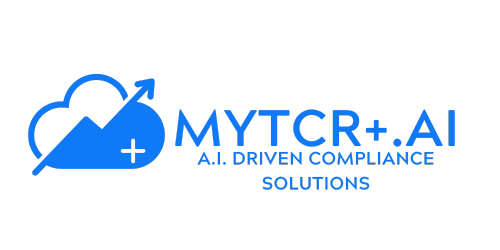In today’s fast-paced business environment, managing Telephone Consumer Protection Act (TCPA) compliance through The Campaign Registry (TCR) has become a critical operational challenge for companies engaged in Application-to-Person (A2P) messaging. The TCR registration workflow, while essential for regulatory compliance, can quickly become a bottleneck if not properly streamlined. Organizations that successfully optimize their internal TCR processes gain not only compliance assurance but also competitive advantages through faster campaign deployment and reduced operational friction.
The complexity of TCR registration often catches businesses off guard. What initially appears as a straightforward registration process reveals itself as a multifaceted operation requiring coordination across departments, careful documentation, and ongoing monitoring. Companies that treat TCR registration as a mere checkbox exercise inevitably find themselves struggling with delays, rejections, and frustrated stakeholders. Conversely, organizations that invest in developing robust internal workflows discover that compliance becomes not only manageable but can actually enhance operational efficiency.
Building a Foundation Through Clear Role Definition
The foundation of an efficient TCR registration workflow begins with clear role definition and responsibility assignment. Companies must designate specific team members who understand both the technical requirements and business implications of TCR registration. This typically involves collaboration between compliance officers, marketing teams, and IT personnel. When these stakeholders work in concert rather than in silos, the registration process moves from a days-long ordeal to a matter of hours.
Establishing a cross-functional TCR team proves essential for organizations of any size. The compliance officer brings expertise in regulatory requirements and ensures that all registrations align with TCPA guidelines and carrier policies. Marketing team members contribute their understanding of campaign objectives, target audiences, and messaging strategies. IT personnel provide the technical infrastructure necessary to integrate TCR processes with existing messaging platforms and maintain data security throughout the registration lifecycle.
Beyond merely assigning roles, successful organizations create clear accountability structures. Designating a primary TCR workflow owner ensures that someone maintains oversight of the entire process, coordinates between departments, and serves as the central point of contact for questions or issues. This individual becomes the organization’s internal TCR expert, developing deep knowledge of requirements, common pitfalls, and best practices. Their expertise becomes invaluable when troubleshooting registration issues or navigating complex scenarios that don’t fit standard procedures.
Mastering Documentation Preparation and Management
Documentation preparation represents one of the most time-consuming aspects of TCR registration. Organizations that maintain centralized repositories of necessary materials—including tax identification numbers, business formation documents, and brand verification information—can dramatically accelerate the process. Creating standardized templates for campaign descriptions and use cases ensures consistency while reducing the likelihood of rejections due to incomplete or unclear information. Many successful companies implement document management systems specifically designed to house TCR-related materials, ensuring that information remains current and accessible to authorized personnel.
The challenge of documentation extends beyond simply gathering required materials. Each piece of documentation must be current, accurate, and presented in the format expected by TCR and Campaign Service Providers. Business licenses expire, corporate structures change, and website content evolves. Organizations must implement regular review cycles to ensure that their documentation repository reflects current business realities rather than outdated information that could trigger registration rejections.
Developing standardized campaign description templates deserves particular attention. TCR reviewers evaluate campaign descriptions for clarity, completeness, and compliance with approved use cases. Templates that incorporate best practices help ensure that every submission meets these standards while allowing for customization based on specific campaign needs. Effective templates include prompts for key information such as how customers opt in to receive messages, what type of content will be sent, and how frequently messages will be delivered. They also provide guidance on tone and language that resonates with reviewers, avoiding vague descriptions or terminology that might raise red flags.
Version control becomes crucial when managing TCR documentation. As business operations evolve, campaign descriptions and supporting materials must be updated to reflect these changes. Implementing a versioning system allows organizations to track how documentation has evolved over time, understand what versions were used for specific registrations, and roll back to previous versions if necessary. This historical record also proves valuable during audits or when investigating why particular registrations succeeded or failed.
Leveraging Technology for Workflow Automation
The actual submission process benefits enormously from workflow automation. Rather than manually entering information across multiple platforms, forward-thinking organizations leverage API integrations between their messaging platforms and TCR portals. This automation reduces human error, eliminates redundant data entry, and creates audit trails that prove invaluable during compliance reviews. Automated workflows can also trigger notifications when registrations require attention, preventing campaigns from languishing in pending status.
Modern messaging platforms increasingly offer native TCR integration capabilities that streamline the registration workflow. These integrations allow businesses to initiate brand and campaign registrations directly from their messaging dashboard, pulling relevant information from existing system records rather than requiring manual data entry. When configured properly, these automated workflows can reduce registration completion time by seventy percent or more while simultaneously improving accuracy.
Beyond initial submission automation, workflow systems should incorporate intelligent status monitoring. Automated alerts notify responsible team members when registrations move between states—from submitted to under review, from review to approved, or from review to requiring additional information. These real-time notifications enable rapid response to registration issues, preventing delays that could impact campaign launch timelines. Some advanced systems even integrate with project management platforms, automatically updating campaign launch schedules based on TCR registration status.
Data validation represents another valuable automation opportunity. Before submissions reach TCR, automated validation rules can check for common errors such as missing required fields, incorrectly formatted tax identification numbers, or campaign descriptions that fall below minimum length requirements. Catching these issues before submission saves time and reduces frustration by preventing easily avoidable rejections. Building a library of validation rules based on past registration experiences creates a continuously improving system that becomes more effective over time.
Implementing Quality Control and Review Mechanisms
Quality control checkpoints throughout the registration workflow serve as guardrails against costly mistakes. Implementing a peer review system where a second team member validates information before submission catches errors that might otherwise result in delays or denials. This additional layer of scrutiny also ensures that campaign descriptions accurately reflect actual messaging practices, reducing compliance risks down the line.
The peer review process need not be burdensome to provide value. A structured review checklist guides the secondary reviewer through key verification points, ensuring consistency across different reviewers and campaigns. This checklist might include items such as verifying that the stated use case matches the campaign description, confirming that opt-in language accurately reflects actual practices, and ensuring that all required documentation is attached and current. The few minutes invested in peer review often prevent days or weeks of delays resulting from avoidable registration issues.
Beyond peer review, some organizations implement tiered approval processes based on campaign characteristics. Standard campaigns following well-established patterns might require only peer review before submission. Novel campaign types, those involving sensitive industries, or high-volume initiatives might require additional approval from compliance leadership before moving forward. This risk-based approach allocates review resources efficiently while ensuring that higher-risk registrations receive appropriate scrutiny.
Creating feedback mechanisms between reviewers and submitters strengthens the quality control process. When reviewers identify issues, they should provide clear explanations of what was wrong and why it matters, transforming quality control from a gatekeeping function into an educational opportunity. Over time, this feedback helps submitters internalize best practices and develop stronger intuition about what makes for successful registrations, gradually reducing the error rate and accelerating the overall workflow.
Establishing Continuous Improvement Through Feedback Loops
Perhaps most importantly, organizations must establish clear feedback loops for continuous improvement. When registrations encounter issues or delays, documenting the root causes and implementing preventive measures transforms failures into learning opportunities. Regular training sessions keep team members updated on evolving TCR requirements and best practices, while periodic workflow audits identify bottlenecks and inefficiencies.
Developing a comprehensive knowledge base serves as the foundation for institutional learning around TCR registration. This repository should capture not only official guidance and requirements but also organization-specific learnings from past registrations. Documenting what worked, what didn’t, and why creates a valuable resource that helps new team members come up to speed quickly and ensures that hard-won knowledge doesn’t disappear when experienced personnel move to other roles.
Metrics play a crucial role in driving continuous improvement. Organizations should track key performance indicators such as average time from registration initiation to approval, first-submission approval rates, and the distribution of rejection reasons when denials occur. Analyzing these metrics reveals patterns and trends that inform process improvements. If a particular use case category consistently experiences rejections, perhaps the standard template for that category needs refinement. If registration times have been creeping upward, investigating the cause might reveal bottlenecks that can be addressed through automation or resource reallocation.
Regular workflow retrospectives bring the team together to discuss what’s working well and where improvements are needed. These sessions create space for team members to share frustrations, propose solutions, and learn from each other’s experiences. The collaborative nature of retrospectives often generates insights that wouldn’t emerge from individual reflection, while also building team cohesion and shared ownership of the registration process.
Strategic Benefits of Workflow Optimization
The investment in streamlining TCR registration processes pays dividends beyond mere time savings. Companies with optimized workflows can respond more quickly to market opportunities, launch time-sensitive campaigns without delays, and maintain stronger relationships with customers through reliable messaging channels. As regulatory requirements continue to evolve and messaging volumes grow, the organizations that have mastered their internal TCR processes will find themselves positioned for sustained success in an increasingly regulated messaging landscape.
Competitive advantage in today’s market often comes from the ability to move quickly when opportunities arise. A seasonal retailer that can launch a flash sale campaign within hours rather than days capitalizes on weather events, competitor missteps, or trending topics while they’re still relevant. A healthcare provider that can rapidly deploy appointment reminders for a new service line improves patient experience and increases utilization from the moment the service becomes available. These opportunities disappear for organizations whose TCR registration processes involve lengthy delays and multiple revision cycles.
Beyond speed, workflow optimization contributes to regulatory resilience. Organizations with mature TCR processes develop deep expertise in compliance requirements and maintain strong relationships with their Campaign Service Providers. This expertise proves invaluable when regulations change, new use cases emerge, or enforcement actions highlight previously overlooked compliance gaps. Rather than scrambling to understand new requirements, these organizations can quickly assess implications, adjust their workflows as needed, and continue operations with minimal disruption.
The cultural benefits of streamlined workflows should not be underestimated. Teams that consistently experience smooth, efficient registration processes maintain higher morale and greater confidence in their ability to execute. Marketing professionals can focus on crafting compelling campaigns rather than wrestling with registration frustrations. Compliance officers spend time on strategic risk management rather than firefighting registration emergencies. IT teams build and maintain systems that users appreciate rather than constantly fielding complaints about broken processes.
Looking Toward the Future
As the messaging landscape continues to evolve, TCR registration requirements will undoubtedly change and expand. New use cases will emerge, verification requirements may become more stringent, and the volume of registrations across industries will continue growing. Organizations that have invested in building robust, flexible workflow processes will adapt to these changes far more easily than those still struggling with basic registration mechanics.
The future likely holds increased automation opportunities as TCR and messaging platforms mature. Enhanced API capabilities, artificial intelligence-powered documentation review, and predictive analytics that identify potential registration issues before submission will all contribute to further workflow optimization. Organizations with strong foundational processes will be well-positioned to adopt these innovations as they become available, compounding their efficiency advantages over time.
Ultimately, viewing TCR registration workflow optimization as an ongoing journey rather than a one-time project creates the mindset necessary for long-term success. The most effective organizations continually refine their processes, remain curious about emerging best practices, and treat compliance excellence as a strategic priority worthy of sustained investment and attention.


